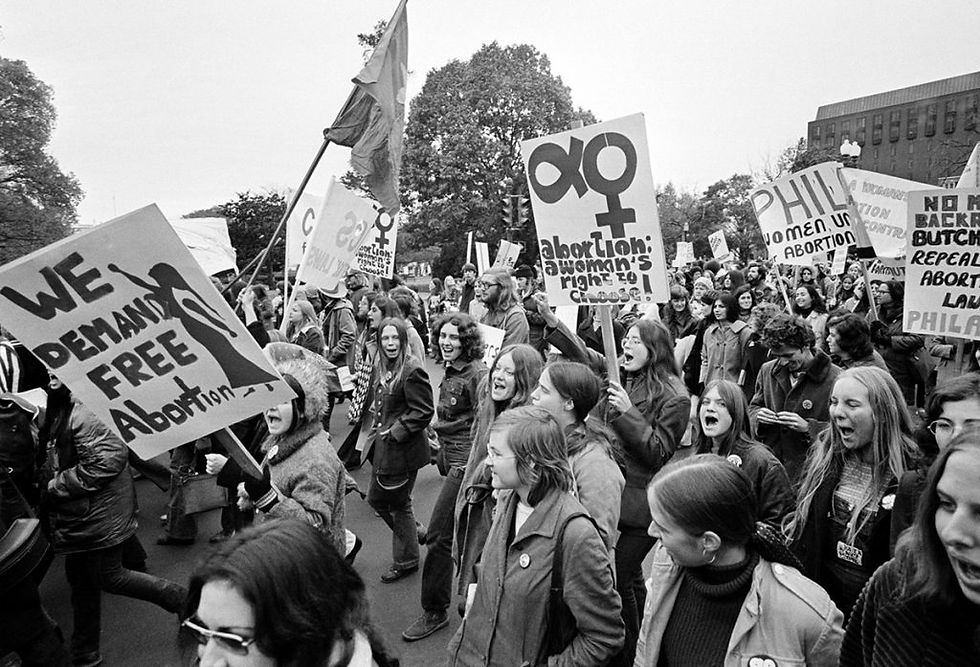Roe v. Wade. What It Means for Women Today.
- Grace Yu

- Jul 11
- 4 min read

Roe v. Wade was a landmark United States Supreme Court decision passed in 1973 that established the legal right for all women to have an abortion. Roe v. Wade stated that the freedom to make the decision to continue or terminate a pregnancy should be in the hands of the individual carrying the fetus and not the government, empowering individuals to exercise control over their bodies and reproduction.
Prior to Roe v. Wade, there were a series of Supreme Court rulings on the controversial topic of abortion such as Griswold v. Connecticut (1965), Eisenstadt v. Baird (1972), and United States v. Vuitch (1971). These cases laid the foundation for the eventual victory for reproductive rights that occurred with the decision on Roe v. Wade. The plaintiff in that case was Norma Leah Nelson McCorvey, who was struggling with substance abuse that had caused her to relinquish responsibility for her first two children. When she became pregnant for the third time in 1969, she decided that she did not want to give birth to the child and wished to terminate the pregnancy. Lawyers helped McCorvey, under the pseudonym Jane Roe, to file a lawsuit as the Texas law only permitted abortion for medical reasons. Eventually, the Supreme Court ruled in McCorvey’s favor, using the right to privacy they believed stemmed from the Due Process Clause of the 14th Amendment to decide that banning abortion was unconstitutional. This decision effectively legalized abortion nationwide, prohibiting the government from passing restrictions on its access.
The story, however, does not end there. On June 24th, 2022, the Supreme Court’s decision on Dobbs v. Jackson Women’s Health Organization overturned Roe v. Wade, ruling that the federal government does not have the right to determine laws regarding abortions as there was no mention of abortion in the Constitution, so the protection of abortion rights that Roe v. Wade had provided was invalid. This returned all authority for regulating abortions and passing abortion-related laws back to state governments. This occurred largely due to the efforts of Donald Trump, who had promised in his 2016 presidential campaign to appoint Supreme Court justices who would overturn Roe v. Wade. He kept his promise, appointing three justices who later ruled on Dobbs in 2022. Trump eventually came to embrace his role in overturning Roe. He bragged in a Twitter (now X) post on May 17th, 2023 that he had been “able to kill Roe v. Wade,” and that, without him, “the pro-life movement would have just kept losing.”
So what does that mean now? What does it all mean now for women living through this? As Supreme Court Justices Stephen Breyer, Sonia Sotomayor and Elena Kagan stated, “Young women today will come of age with fewer rights than their mothers and grandmothers.” The law has been rolled back to be the same as it was prior to 1973, allowing states to decide what is permitted within their regions. Some states have subsequently banned all abortions, some allowed abortions in specific cases, and yet others continued to permit abortion. Without Roe v. Wade, there is no uniform federal policy on whether or not the right to abortion can be curtailed.
Throughout much of our history, women have been seen as commodities who do not deserve to have autonomy. In the 21st century, we should be doing better; instead, however, the Supreme Court ruling that granted women the right to make decisions about their own bodies was overturned, putting the decisions in the hands of male-dominated state legislatures. Have you ever seen women make laws on what a man can and cannot do with their bodies? The pro-life movement’s argument is that abortion is murder. But when you look at the demographics, many of the same people who have a pro-life standpoint are against gun control legislation and are in favor of the dismantling of the Department of Education. If they were truly “pro-life,” then the emphasis on protecting lives should be a priority, and they would support legislation curtailing the use of the worst weapons. Although it is the Second Amendment to have the right to bear arms, creating gun control legislation could prevent so many innocent lives from being taken. Tragically, there were 48,204 such deaths in 2022 and the number only continues to rise. Furthermore, education is a basic human right that guarantees an improvement in students’ later quality of life. If the participants in the pro-life movement were really “pro-life,” they would also support measures for gun control and seek to improve public education. If they are unable to support those viewpoints, then they are not pro-life but rather pro-birth. Not only that, the pro-choice movement is not asserting that women would be forced to have abortions; rather, it is standing for the right of women to have bodily autonomy and make their own decisions about what to do if they become pregnant. Those in the pro-life movement oppose abortion due to political or, particularly, religious beliefs. They are free to choose to do so. So it’s only fair if others can make a different decision for themselves based on their beliefs.


Comments